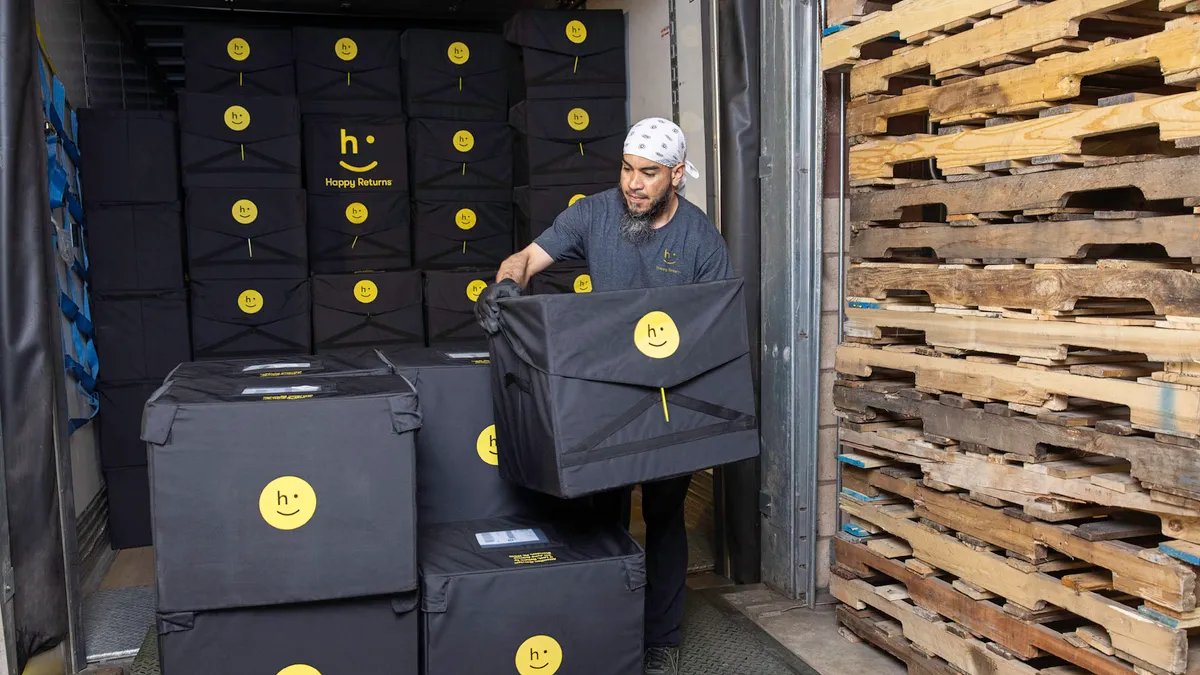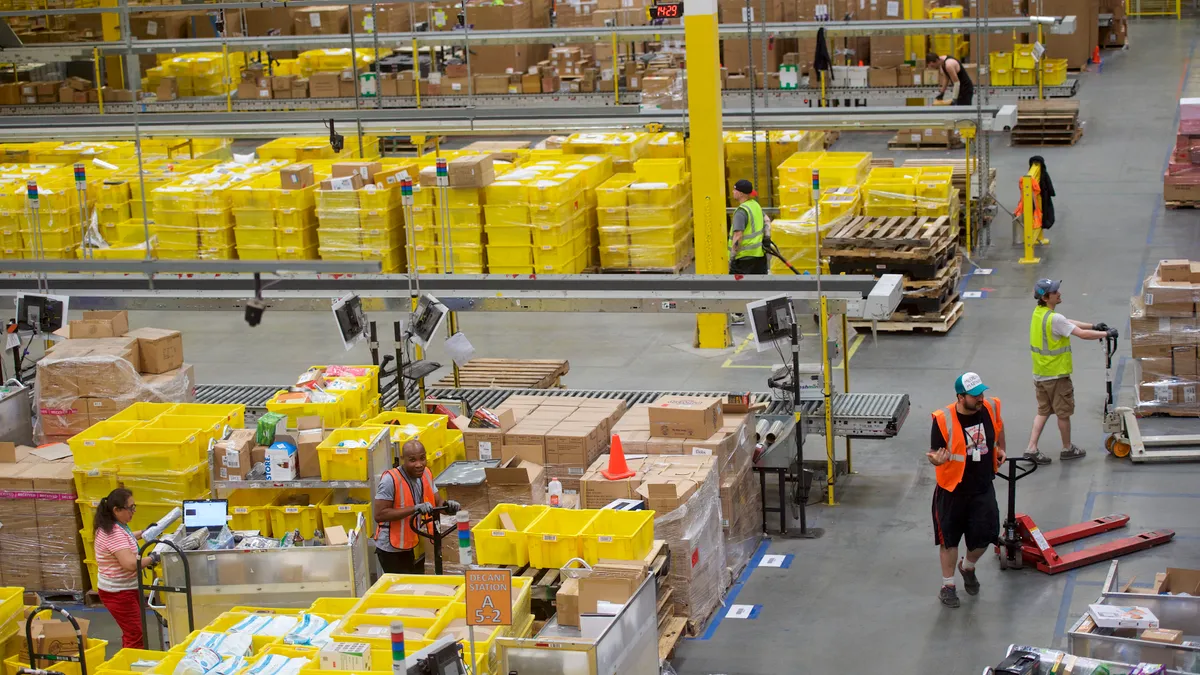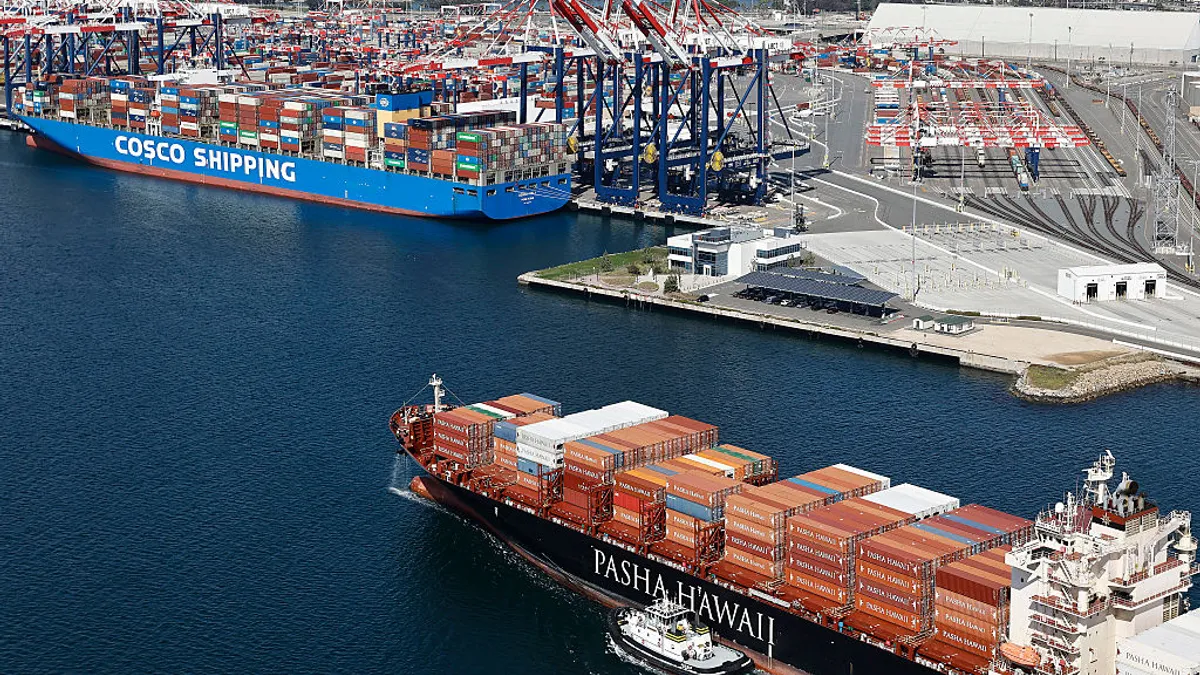While some tailwinds prompting shortages in 2024 may have been resolved, others will carry onto this year with additional twists.
Supply chain managers may still have to deal with risks ranging from geopolitical and weather-related turmoil to more localized challenges.
Heightened shortage risks come whenever a change impacts a high concentration of goods manufactured or produced in a very limited number of places, said Richie Daigle, supply chain evangelist at Tive, a shipment tracker technology company.
Here’s a look at the goods and topics that could be at the top of mind for procurement officers in 2025.
Geopolitical-driven shortages

As President Donald Trump threatens to levy tariffs on Canada and Mexico, along with additional duties on China-based imports, experts say the moves would have an outsized impact on certain goods.
For example, if there are tariffs on Canadian goods, it could create shortages for energy products, pulp and paper products, and automotive parts, said Matt Lekstutis, director at global procurement and supply chain consultancy Efficio, in an interview with Supply Chain Dive.
“There’s lots of conversations going on around potential tariff actions. Those things could also lead to disruptions in supply chain as companies look to find new sources, look to reroute, to avoid tariff issues, and even the cross border administration that could come into play,” Lekstutis said.
Shippers will need to evaluate suppliers globally as they adjust to any price increases spurred by tariffs, said Spencer Shute, VP at procurement and supply chain consultancy Proxima.
"This process could lead to shortages where cost impacts are prohibitive, creating delays in overall manufacturing. This is a critical topic to watch in 2025,” Shute said.
Automotive parts

Even with Trump solidifying his tariff plans, automotive supply chains have had plenty of other sourcing challenges to navigate over the past year
Rivian Automotive, for example, lowered its annual production guidance last year by up to 10,000 vehicles due to an ongoing parts shortage, according to an Oct. 4 securities filing.
Another car maker, Porsche, faced aluminum shortages after a flood at a supplier’s facility in July.
“It is to be expected that the resulting delays in the production and delivery of vehicles will not be fully compensated for in the further course of the financial year,” the company said last year.
When Porsche goes through a crisis, it has more than one solution and a host of measures to secure supply, according to a 2023 annual and sustainability report from the automaker.
One strategy the company uses is closely examining every component to determine if a certain amount of inventory makes sense, Barbara Frenkel, a member of the executive board for procurement at Porsche, said in the report.
“Prioritizing certain cars in production is another sensible options for getting through any shortages,” according to the report.
Food

Egg prices and supplies experienced a tough year in 2024 as bird flu outbreaks persisted. Shortages and elevated prices are expected to continue in 2025.
Egg producer Cal-Maine Foods said it saw demand outpace available supply, according to a Q2 earnings report. As a result, the company has had to buy from outside suppliers and rely more on capacity from recent acquisitions to meet customer needs.
Outbreaks from the bird flu and facility fires last year led to the loss of nearly 40 million commercial table egg layers in 12 states, according to the U.S. Department of Agriculture.
“Ultimately these shortages will lead to delays in food production where eggs are a predominant ingredient. Supply will rebound however costs will remain elevated until supply is recovered,” Shute said in an email.
Another part of the food supply chain, cocoa, is also facing challenges in 2025.
Inclement weather, droughts and labor issues in West Africa have fueled the supply issues for cocoa, according to data from Wells Fargo's Agri-Food Institute.
David Branch, sector manager within the Wells Fargo Agri-Food Institute, noted in a 2024 report that “cocoa is produced predominantly in the hot and humid region of Africa, which produces more than 70% of the world’s supply, followed by Central and South America at 15%, Asia at 13%, and Australia at 2% respectively."
Candy producers like Hershey found themselves increasing their production of sweets that don't contain chocolate due to the higher costs.
Companies making more affordable confections — such as Hershey, Nestlé and Mars — will struggle to keep up with demand without raising prices, Branch told Food Dive last year.
Semiconductors

Semiconductor shortages have been prevalent since the pandemic, and in 2025, the industry's supply issues are still not fully resolved.
“We’re still seeing shortages with semiconductors with the increase in AI and automation that requires electronic components. Though not as scarce as during the pandemic, there are still delays which are impacting manufacturing of electronics and airliners,” Proxima’s Shute said.
A semiconductor giant also recently referenced the ongoing supply challenges in the industry.
C.C. Wei, CEO at Taiwan Semiconductor Manufacturing Company, said 2024 was a mixed year of recovery for the global semiconductor industry in a Jan. 16 earnings call.
“AI-related demand was strong while our other applications saw only a very mild recovery, as macroeconomic conditions weigh on consumer sentiment and end market demand,” Wei said.
In 2025, TSMC expects its fabless semiconductor inventory to return to healthier levels compared to 2024, the CEO added.
Other companies share TSMC’s optimism, even as supply issues remain, due to the boost in U.S. growth from the CHIPS and Science Act. The bill has led to companies being awarded millions of dollars to add manufacturing capacity in the U.S.
One example is Microchip Technology, which was offered $162 million in CHIPS and Science Act funding in 2024 to increase domestic production of microcontroller units and other related semiconductor products that support the automotive and aerospace industries.
But even with the funding infusion, some challenges remain.
“The actual construction time from the date of breaking ground to the first wafers being manufactured, it kind of nets out to around two years,” John VerWey, an advisor in the Pacific Northwest National Laboratory’s global security, technology and policy group, told Manufacturing Dive last year.
“But that does not take into account any of the pre-permitting [or] any of the permitting that happens before you break ground,” VerWey added.
Labor shortages have also created issues in the past. TSMS pushed back the opening dates of two fabs in Arizona in 2023 because of the lack of specialized labor. Chairman Mark Liu said on an earnings call from July 2023 that the company was struggling to find workers with expertise in equipment installation in a semiconductor facility.
Pharmaceuticals and medical supplies

Shortages of certain medical supplies, particularly IV fluid, are expected to continue this year.
Hurricane Helene impacted the supply of IV fluids, according to the FDA, with empty IV bags of all sizes currently in shortage, an issue that is estimated to last into March.
Amidst the shortage, some companies like Baxter have been able to increase their allocation of certain IV fluids. In November, Baxter said it expected to restart a second IV fluid production line after Hurricane Helene damaged its plant in western North Carolina.
Baxter notified customers on Jan. 21 that allocations of two of its sodium chloride IV solutions were increased to 100%.
“Please note that there is a typical 1 to 2-week lag time for product to flow through the full distribution network after allocation changes are implemented,” the company told customers.
Vulnerabilities remain elsewhere in the medical supply sector, one government official warned.
Michelle Tarver, the FDA’s’s medical device director, recently warned of the U.S.’s lack of mandatory reporting requirements for potential medical device shortages. The director said the U.S. risks falling behind other countries in its ability to ensure product supply.
Tarver’s warning follows the FDA’s call for new statutory authority on device shortages and for full funding of its supply chain program.























